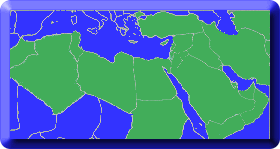
Topics in Middle Eastern and North African Economies
Document Type
Article
Publication Date
9-1-2023
Journal Title
Topics in Middle Eastern and North African Economies
Volume
25
Issue
2
Publisher
Middle East Economic Association and Loyola University Chicago
Abstract
The increased level of debt is a major risk for the financial stability and questions the ability of countries to balance fiscal vulnerabilities with development goals. With the rising debt wave and additional pressures induced by the pandemic and the Russian/Ukrainian war on sources of development finance, this study uses a panel quantile regression to re-examine the asymmetric relationship between the external debt and economic growth in six highly indebted MENA countries, namely, Bahrain, Egypt, Jordan, Lebanon, Morocco, and Tunisia over the period 2006-2019. The outcomes support the main hypothesis that high debt reduces economic growth, yet this effect seems not to be homogeneous across the various quantile levels. Currently, the global macroeconomic conditions and Russia’s war with Ukraine add another layer of complexity to the high external indebtedness and will likely affect these countries’ ability to refinance their foreign currency-denominated debt, threatening to overwhelm these economies.
ISSN
2334-282X
Recommended Citation
Haddad, Mahmoud; Selmi, Refk; and Hammoudeh, Shawkat, "The Asymmetric Effects of External Debt on Economic Growth in Selected MENA Countries: Some Insights from a Panel Quantile Regression". Topics in Middle Eastern and North African Economies, electronic journal, 25, 2, Middle East Economic Association and Loyola University Chicago, 2023, http://www.luc.edu/orgs/meea/
Creative Commons License

This work is licensed under a Creative Commons Attribution-Noncommercial-No Derivative Works 3.0 License.
Copyright Statement
© The Author(s), 2023



Comments
Presentation of the articles in the Topics in Middle Eastern and North African Economies was made possible by a limited license granted to Loyola University Chicago and Middle East Economics Association from the authors who have retained all copyrights in the articles.